Degenerative Disc Disease
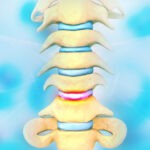
Degenerative Disc Disease is a condition that causes the intervertebral discs in the spine to deteriorate or break down. Intervertebral discs are the shock-absorbing pads located between your vertebrae. The vertebrae are the series of bones that make up your spine. Degenerative Disc Disease can occur in any part of the spine. It develops more […]
Read More....Cervical Radiculopathy
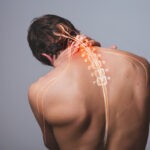
Cervical radiculopathy is a condition that results when a nerve is pinched or irritated as it leaves the spine in the neck. Nerves from the spinal cord exit at various levels from the spine and travel throughout the body. With cervical radiculopathy, the nerves are affected at the spine, but the symptoms may be felt […]
Read More....Herniated Disc
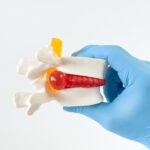
A herniated disc, also called a “ruptured” disc, is a common source of neck or lower back pain. Discs are cushion-like pads that are located between the series of small bones that make up the spine. A herniated disc occurs when the outer disc layer tears and its gel-like interior comes out. The contents can […]
Read More....Hallux Rigidus
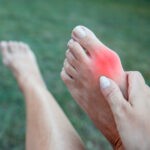
Your big toes help you maintain balance. They receive a huge amount of stress each time you walk, stand, squat, or climb stairs. People with degenerative arthritis may develop a condition called hallux rigidus, meaning a “stiff big toe.” Hallux rigidus occurs when the joint at the base of the big toe wears down and […]
Read More....Mallet Toe

Mallet toe most commonly affects the longest toe on the foot, although any toe can be affected. It causes the joint closest to the tip of the toe to bend downward. Mallet toe is most frequently caused by structural problems in the toe or from wearing poor fitting shoes. It is important to diagnose and […]
Read More....Hammer Toe
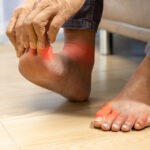
Hammertoe most commonly affects the second toe on the foot. It is frequently caused by structural problems in the toe or from wearing poor fitting shoes. It is important to diagnose and treat hammertoe early because the condition tends to become worse over time. If left untreated, hammertoe can require surgery. Hammer Toe Symptoms The […]
Read More....Toe Fractures

Your toes are part of your forefoot. Your big toe (hallux) contains two bones (phalanges). The rest of your toes contain three bones. Your toes help you balance and walk. Toe fractures can usually hurt, but they are rarely incapacitating. They most frequently result from some type of trauma. Toe Fracture Symptoms Toe fractures can […]
Read More....Morton’s Neuroma
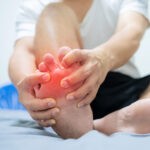
Morton’s Neuroma is a painful foot condition. It occurs when a nerve near the toes becomes compressed and inflamed. People with bunions, flat feet, and hammertoes are susceptible to developing Morton’s Neuroma. Pressure from standing, walking, jumping and running or wearing high heeled, pointed toe, or tight-fitting shoes can contribute to the condition. High impact […]
Read More....Metatarsal (Forefoot) Fracture

Your forefoot acts as a springboard with each step you take, and a cushion when your foot touches the ground. The metatarsal bones located in the forefoot bear and shift your body weight to help maintain balance. Jumping, twisting, dancing, and running add even more force to the forefoot, making the bones vulnerable to fracture […]
Read More....Lisfranc Dislocation

A Lisfranc fracture occurs in the bones of the midfoot. The fracture results from dropping something heavy on the foot or twisting the foot during sports or in a car accident. If you suspect you have a Lisfranc fracture, you should see your doctor right away for prompt treatment. Some Lisfranc fractures can heal with […]
Read More....




